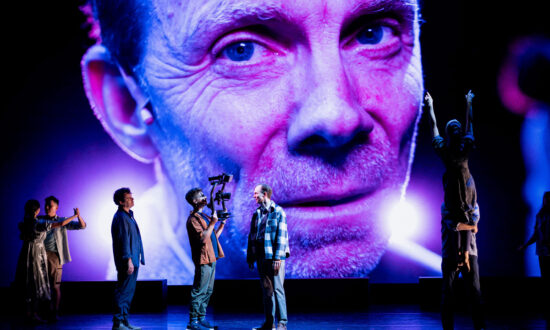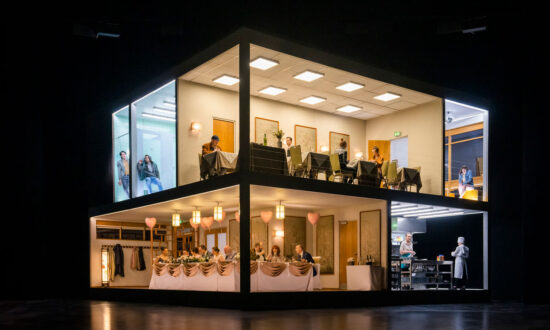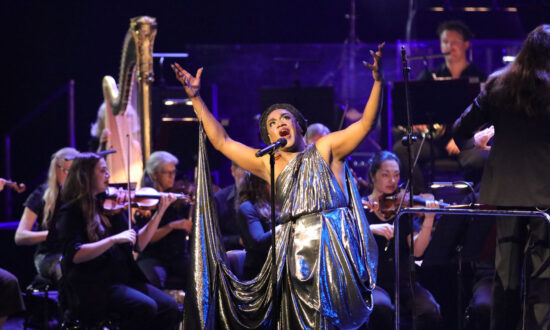If Mozart’s Requiem can be set to dance, and done so successfully as we saw in the 2020 Adelaide Festival, why not Verdi’s as well? Iintrinsically it is hardly a problem to combine one artform with another (in this case, ballet with music), because it opens up possibilities for newer, more creative imaginative interpretations of any great, enduring work of the repertoire.
As always, it comes down to how well it is done. Christian Spuck’s choreography with Ballett Zürich was not as daring as one might have imagined. Verdi’s mighty work, which far eclipsed in emotional scope anything that the Latin mass for the dead stood for in his century (or in any), might have admitted something more boldly contemporary in style than we had here.
First shown in Zurich in 2016, Spuck’s vision of Verdi does have some striking modern elements: his 36 dancers sweep across the stage, with all the singers, too, in tight linear formations that look almost sculptural. A solo male dancer in a tattoo-looking body suit writhes around as if in a death struggle in the thunderous “Dies Irae”.
But for the arias, in which Verdi plumbs the depths of his soul and expresses all the affection he had for his late departed novelist friend Alessandro Manzoni, Ballett Zürich relies on that most traditional element, the pas de deux. It is all beautifully done, fluidly and with poised discipline. This contrast, between bodies swarming en masse and couples gracefully entwined in something not far removed from Swan Lake, is what Messa da Requiem is made of.
Romeo Castellucci’s choreography for Mozart’s Requiem – featuring 12 dancers from Australian Dance Theatre – was far more daring (with a car wreck to depict road fatalities and a skull being kicked around the stage like a soccer ball), but not necessarily better for it. Spuck gives us beauty, simplicity and memorability. There are top dancers in his troupe, and they are a pleasure to watch.

Featuring more than 170 Adelaide singers and musicians with dancers from Ballett Zürich, Messa da Requiem is the 2023 Adelaide Festival centrepiece. Photo: Andrew Beveridge / Supplied
Alas, the Messa da Requiem opening night was marred by an incident that brought the performance to a sudden halt before the “Sanctus”. Patrons were asked to stay seated for 30 minutes and could only wonder what had gone wrong. It turned out that there had been a medical emergency due to one of the performers receiving a leg injury – an ambulance had to be called.
Unsteadiness had already set in before the stoppage, with the quartet of solo singers struggling a little in the “Offertory”. It was only when soprano Eleanor Lyons put in a tremendously powerful performance later on in the highly operatic “Lux Aeterna” that the might of Verdi’s Requiem was recaptured. She took the stage with a brave, resolute air and was magnificent.
As a straight musical performance (for the ears, not the eyes), it was excellent. Johannes Fritzsch’s direction of the multitude of singers on stage and the Adelaide Symphony Orchestra in the pit was assured and well-judged throughout in ampleness of line and space – right out of the Verdi copybook.

Get InReview in your inbox – free each Saturday. Local arts and culture – covered.
Thanks for signing up to the InReview newsletter.
Sharing the stage with the dancers and sharing in some of the easier choreographic moves, the huge choir – dubbed the Adelaide Festival Chorus and finely honed by Christie Anderson – was splendid. The soloists shone for the greater part but tended to fade in spots. Mezzo soprano Caitlin Hulcup was wonderfully strong. Tenor Paul O’Neill has a lovely voice for Verdi and added real pathos to his solos. Bass Pelham Andrews was commanding, as he so often is, in both voice and presence.

Soprano Eleanor Lyons in Messa da Requiem. Photo: Andrew Beveridge / Supplied
It is a truism that is not true that Verdi’s Requiem is an opera in disguise. So often it is described as his “best opera”. But the fact is that the composer was not particularly religious, and this is not a religious work. It is a tribute to his friend. To have dancing as an additional element was not jarring at all, as one may have feared. Rather it served to reinforce this work’s power and graceful affection.
Despite the hitch, this festival centrepiece was very enthusiastically received, winning cheers and a standing ovation at the end.
Messa da Requiem continues at the Festival Theatre through to Saturday night.
Read more Adelaide Festival coverage here on InReview.
Support local arts journalism
Your support will help us continue the important work of InReview in publishing free professional journalism that celebrates, interrogates and amplifies arts and culture in South Australia.
Donate Here




